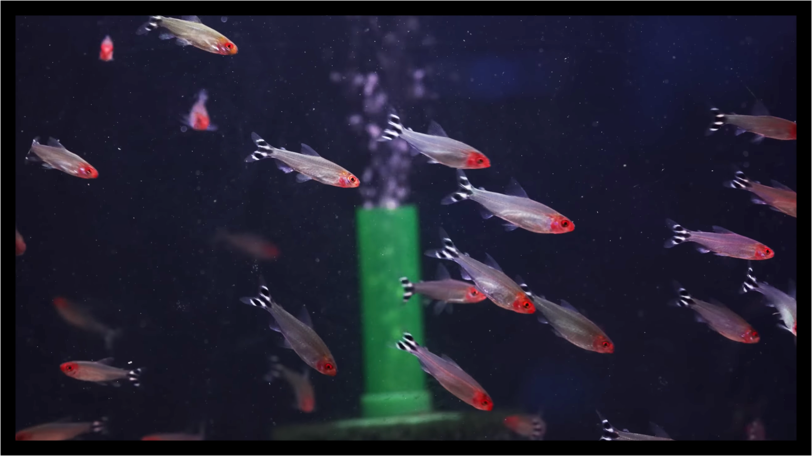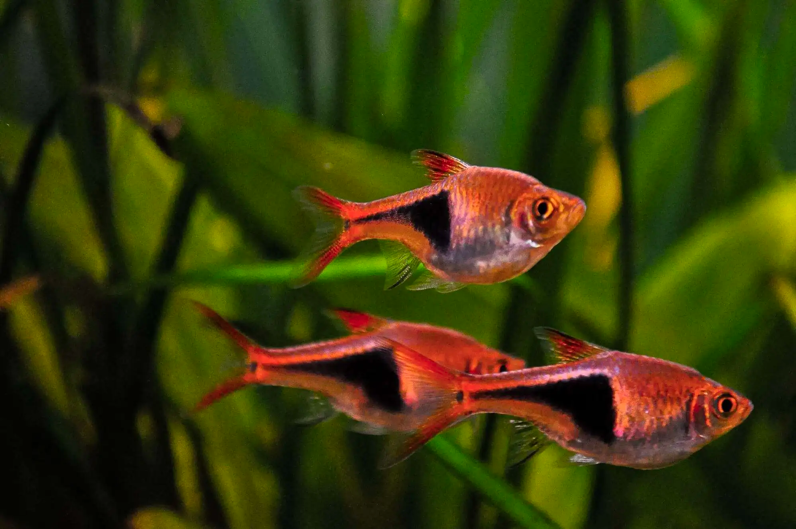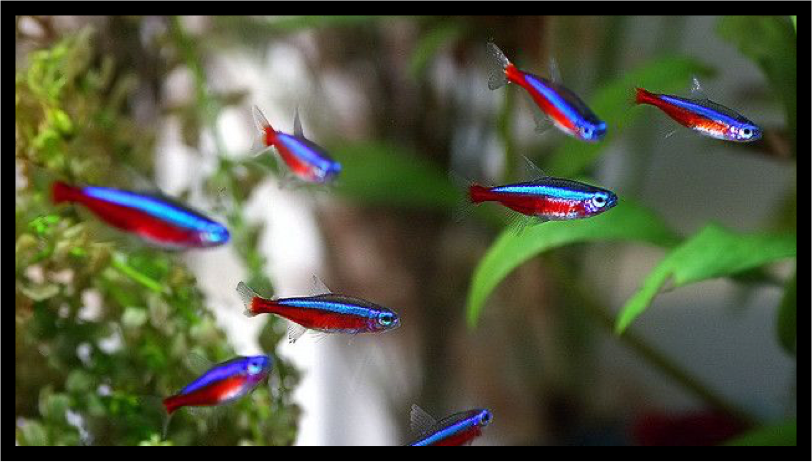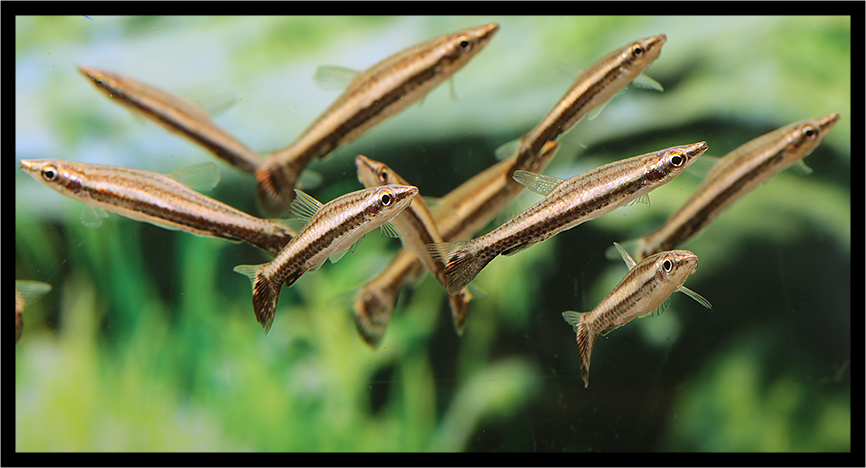Schooling fish displays their natural behavior the best when they are in a group. Imagine a group fish swimming in the same direction, feeding together, hanging out together. They act like one whole big fish when they are tightly schooling.
Schooling Fish vs Shoaling Fish
If you’re into schooling fish, you might have already heard the term: shoaling fish.
Schooling fish are usually swims in the same direction, feeds together, hang out together and they are tightly grouped and well coordinated. Shoaling fish on the other hand – they are a loose group of fish that hangs out together but they are not as coordinated as schooling fish. Sometimes shoaling fish likes to mind their own business.
I personally love watching these fish, displaying their natural behavior in an aquarium setup while I am sipping my coffee. Here are the top 10 schooling fish that we like the most.
1. Hemigrammus Rhodostomus (Rummy-nose Tetra)

Hemigrammus Rhodostomus (Rummy-nose Tetra) has red nose and black and white tail. Once they school together, it makes your aquarium fun to watch. In our opinion, yhey are the best in best schooling fish. Their red noses and black tails will move to the same direction in an overly synchronized way. That’s fascinating.
2. Trigonostigma Heteromorpha (Harlequin Rasbora)

Trigonostigma Heteromorpha (Harlequin Rasbora) might not be as active as a rummy-nose tetra but they have beautiful black patch on their body which makes them interesting to watch. We recommend that you keep them in groups greater than 8 or more. They might feel more confident when you have a bigger group.
3. Hyphessobrycon Amandae (Ember Tetra)
Yet another tetra fish making to the list. Their dark orange to red(ish) color so much interesting to watch when they move all together. Especially when they are in a planted tank with a lot of green, their colors really pop and makes the difference. They are active swimmers but they will usually swim in the middle section of the aquarium. We recommended to pair them with corydoras so that any uneaten food will be consumed by the corydoras when they sunk at the bottom.
4. Corydoras Panda (Panda Cory)

Corydoras Panda (Panda Cory) has very unique colors. They have black patches around their eyes (we call them face mask) and the black patch just before the caudal fin. They are active schooling fish. We recommend that they show their colors best with a lighter substrate. It makes it super interesting to watch these black patches move along the bottom of the aquarium.
5. Paracheirodon Axelrodi (Cardinal Tetra)

Paracheirodon Axelrodi (Cardinal Tetra) are very popular schooling fish. They look like Neon Tetras but in fact they are different species. They will develop dark red and neon stripe throughout their body. They grow up to 2 inches in length and their colors will just pop in a planted aquarium if they feel confident.
6. Kryptopterus Vitreolus (Glass Catfish)
Look no further if you’re in the search for a interesting fish. They have a unique appearance and these are one of the few catfish that will not stay at the bottom of your aquarium. They have translucent body and they show off their internal organs. If you look closely, you might even see their hearth beating. Even though they have a translucent body, under specific lighting, these fish will glow like a rainbow.
7. Nannostomus Eques (Hockeystick Pencilfish)

Nannostomus Eques (Hockeystick Pencilfish) is another fish that you can keep as a schooling fish. They like to swim close to top section of your aquarium and they like to stay vertically. If you have a group of Nannostomus Eques (Hockeystick Pencilfish), I assure you that it’ll look interesting when all of them swims in the same direction and stays vertically. Ideally, it’s recommended to be kept in groups that are 10 or more.